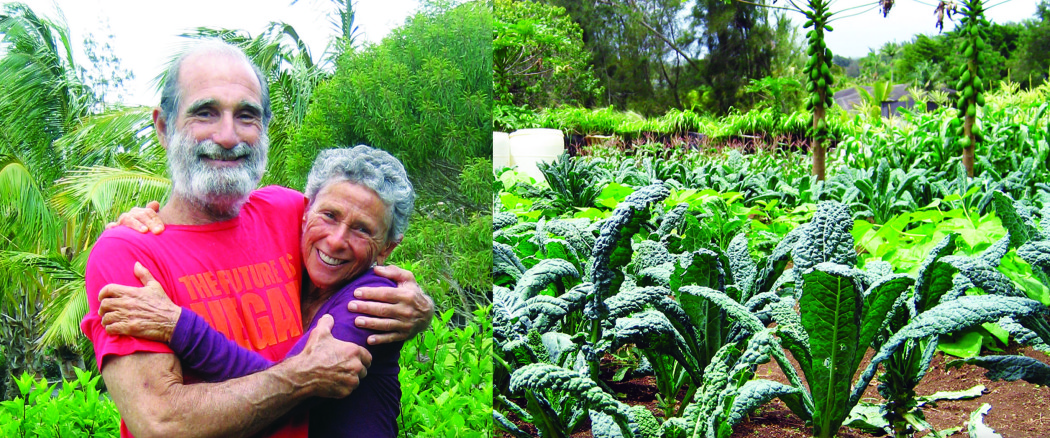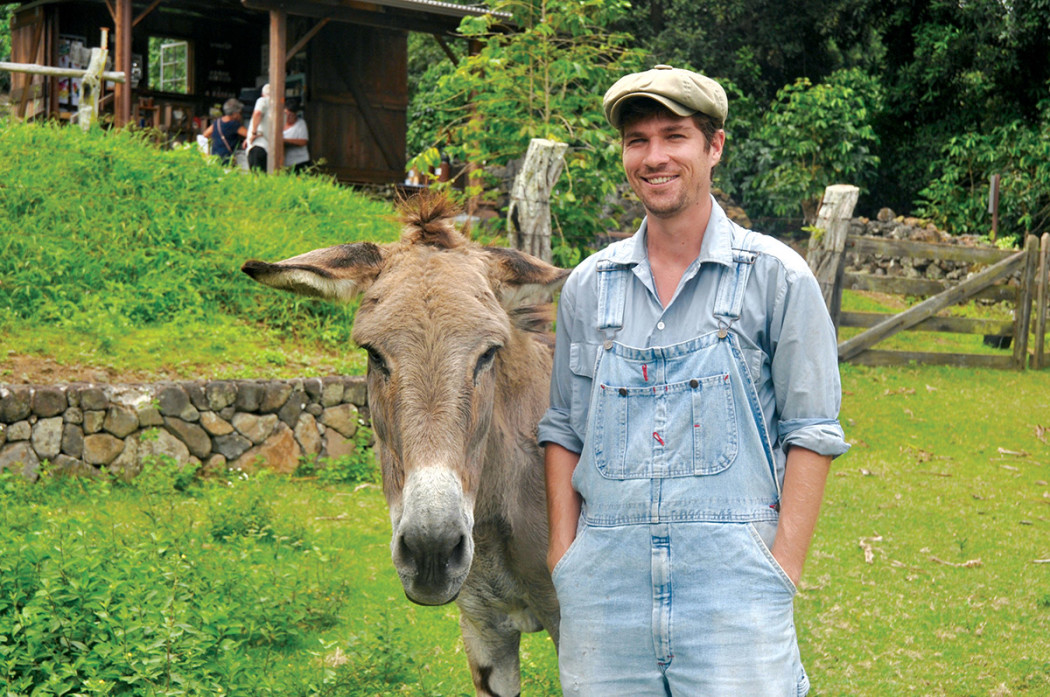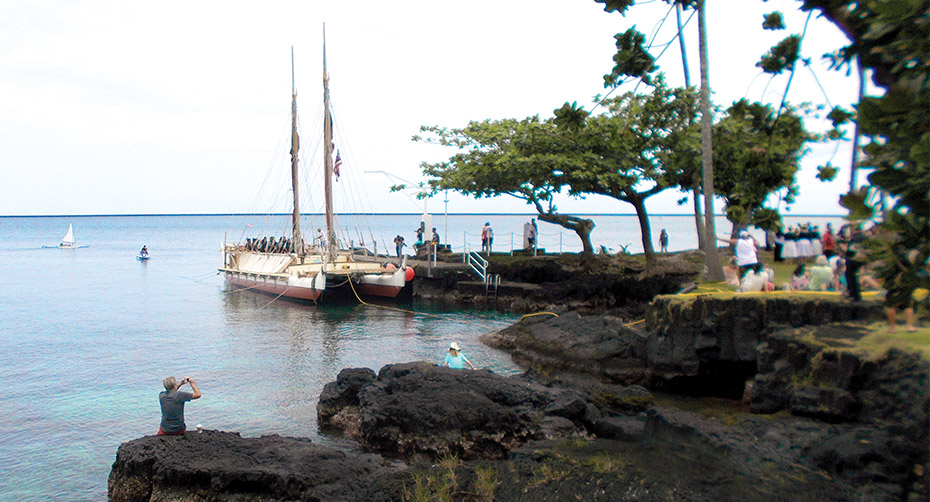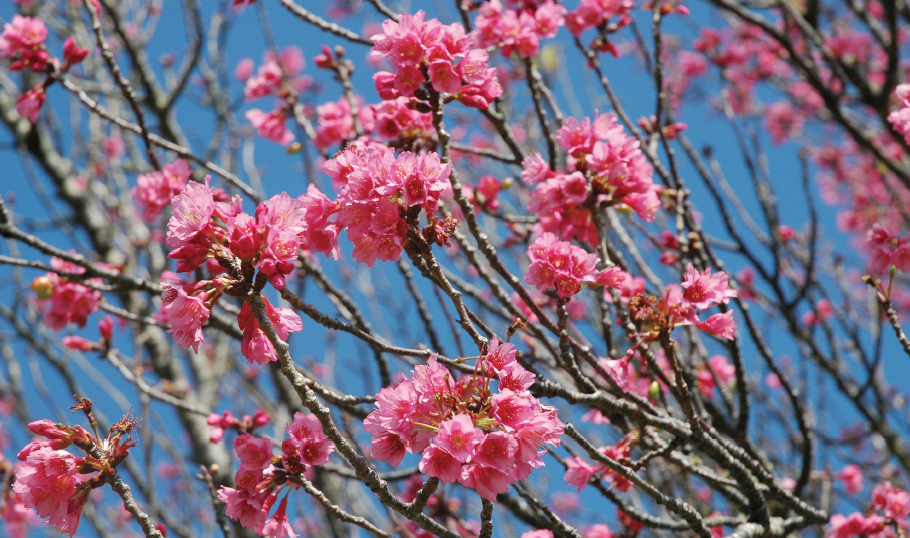
It’s Cherry Blossom Time!
 The age-old tradition of hanami is celebrated on Hawai‘I Island every first Saturday in February during the annual Waimea Cherry Blossom Heritage Festival. It’s when cool-clime Waimea, often back-dropped by a wintery white summit atop Mauna Kea, boasts an eruption of pink cherry blossoms. The heart of the multi-hued floral display encircles Church Row Park with its many varieties of cherry trees. Hanami, which literally translates to hana (flower) and mi (look), means “cherryblossom viewing party.”
The age-old tradition of hanami is celebrated on Hawai‘I Island every first Saturday in February during the annual Waimea Cherry Blossom Heritage Festival. It’s when cool-clime Waimea, often back-dropped by a wintery white summit atop Mauna Kea, boasts an eruption of pink cherry blossoms. The heart of the multi-hued floral display encircles Church Row Park with its many varieties of cherry trees. Hanami, which literally translates to hana (flower) and mi (look), means “cherryblossom viewing party.”
Hanami Tradition
Harking from seventh-century Japan, hanami celebrates the fleeting beauty of nature while heralding the arrival of spring. Japanese aristocrats of the day would gather under blossomingtrees and write poetry or draw the beauty of sakura (cherry blossoms). As the blossoms are short-lived, poets used sakura as a metaphor for life itself—beautiful, yet temporary. By Japan’s Endo Period (1600-1867) citizens from all walks of life participated in hanami, with customs including mountain hikes to fi nd blossoming trees for a picnic, complete with sake.
Today, hanami continues in Japan, with people gathering for eating, drinking, and music wherever flowering trees are found. Popular cherry blossom locations get crowded so protocol dictates the claiming of a picnic spot. Best-practice guidelines are shared at japan-guide.com/e/e2011_how.html.
For over half a century, the Japan Meteorological Agency offered a forecast for blossoming trees so partygoers could plan accordingly and be prepared for nature’s show. Now tourism websites, smart phone apps, and the crowd-sourced Sakura Channel share eye-witness reports on the opening of blossoms. The southern islands of Okinawa see the first pink of the season and media closely follow the “cherry blossom front,” reporting the sightings of pink moving from south to north.
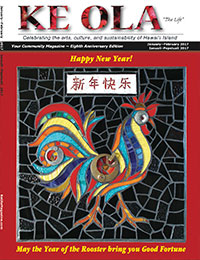
In the U.S., hanami has caught on, as numerous municipalities have been gifted with cherry trees from Japan as a gesture of friendship. The National Park Service monitors the blossoming of cherry trees for the annual festival in Washington D.C. with a Bloom Watch posted at nationalcherryblossomfestival.org. Over the past 15 years, peak bloom dates for “the nation’s greatest springtime celebration” have ranged from March 17 to April 11. Signature events over three weeks include a Pink Tie Party, Blossom Kite Festival, Sakura Matsuri-Japanese Street Festival, and a parade. Festival goers hop aboard the Blossom Bus “to look for pink and petals” throughout the capital’s Tidal Basin.
Waimea’s Cherry Blossom Trees Cherry trees first came to Waimea in 1953 as a living memorial to Fred Makino, founder of Hawai‘i’s Japanese language newspaper, Hawaii Hochi. The three Formosan cherry blossom trees were distributed to different people, and one can be viewed at the back of the Kamuela Hongwanji Mission grounds, adjacent to Church Row Park. The late Isami Ishihara, a noted Waimea gardener and bonsai master, propagated more trees using seeds from the Formosan trees. He donated the seedlings to the Waimea Lions Club for community beautification, and the club received permission from the county to plant the trees in 1972 at Church Row Park.
According to Lions Club member Frank Fuchino, who has been involved with the project since day one, the idea to beautify Church Row Park sprang from talk of a future bypass road coming in. “We heard a road would be built to bypass Waimea, so we thought we’d plant the trees to attract people to town,” he explains. “(The late) Masayoshi Onodera coordinated the planting of the trees.” Through the years, Lions Club members nurtured the trees and replaced those that died. The late Hisao Kimura, who was a professional agronomist, was instrumental in laying the groundwork for the partnership between the county and the club in caring for the trees. In 1975, the Lions planted numerous trees throughout Waimea to commemorate the visit of Emperor Hirohito and his wife to Hawai‘i and honor the first Japanese immigrants who settled in Waimea 100 years before. “Each year, we’d plant one or two trees to honor certain individuals or welcome visiting dignitaries,” adds Frank.
The park is currently home to about 75 trees. “The cherry trees have been our kuleana (responsibility) for more than 40 years,” notes Jim McDonough, treasurer of the Waimea Lions Club. “We trim the trees once or twice a year, fertilize and spray them to prevent rust and eradicate moss,” says Jim. The county provides supplies. The men use their own clippers and Lions member Fred Nonaka, a landscaper, offers the use of his chain saw. For years, Dickie Hanano served as the club’s leader in caring for the trees, but now Fred spearheads the activities of the never-ending service project.
Church Row Park Blossoms with Beauty
During the Cherry Blossom Festival, the club offers a photodisplay that chronicles the original and subsequent plantings. Located at Church Row Park, the booth also shares photos of the park in full bloom and is updated annually. Frank thinks the original vision for beautifying Church Row Park has come to fruition. “We have people coming from Japan and around the world to Waimea to see the blooming trees and attend the Cherry Blossom Festival. It has brought many organizations together. Without the trees, there would be no festival!” he exclaims.
Cherry trees bloom after a good “winter chilling” and Waimea residents often see their trees flower after a winter storm has dropped snow atop Mauna Kea. One year, the late Dolly Loo, one of the festival’s first organizers, didn’t think the trees were going to bloom in time for the festival, so she recruited the help of her late husband Gilbert, a nurseryman by profession. He picked up ice from a local bar and spread about a gallon of cubes around each of the shallow-rooted trees. The icy application seemed to work, as in a few days, the trees werefull of flowers.
The Festival is a Yearly Community Event
Originating at Church Row Park in 1994 under the watch of former county Parks and Recreation Director George Yoshida, the festival has evolved over the years to involve numerous community organizations offering fun activities at multiple venues.
At the helm is Roxcie Waltjen, culture and education administrator for the county’s park and recreation department. She visualizes the event as Waimea’s premiere festival, attracting both visitors and residents while fostering community, business, and government participation. “My goal and vision is to develop, encourage, and educate attendees through interactive activities, cultural demonstrations, entertainment, and collaborations,” she explains. That includes tree plantings by dignitaries like the Consulate General of Japan, state governor, and island mayor.
Every year the festival honors individuals and organizations on the main stage that “shine” within Waimea, whether they are community volunteers, leaders, paniolo, artisans, or businesses involved with the festival. While activities vary each year and venues come and go, the festival always offers hands-on fun: mochi pounding, bonsai demonstrations, traditional Japanese tea ceremonies, sake tasting, quilting instruction, and bon dancing.
Food, Family, and Fun
Hungry? Taste-test offerings at staged cooking demonstrations by local chefs. Browse among numerous broke-da-mouth food booths, Asian-baked goods like andagi and prune mui and more.
“We are always open to new ideas and have welcomed unexpected windows of opportunities,” notes Roxcie. In fact, headliners sometimes travel all the way from Japan to delight the stage with authentic Japanese costume, dance, song, and instrumentation.
Case in point is when the renowned Okinawan dance academy, Hooge Kai Nakasone, performed authentic traditional court and folk dances at the festival. Attendees are also treated to a wide range of local entertainment, including taiko drumming.
There are multiple locations staging a wide range of local and ethnic entertainment, numerous craft vendors—over 150 at Parker Ranch Center (PRC) alone—as well as farmer’s markets, sales of Asian-themed collectibles, cherry tree blossoms, and cherry-themed art…and don’t forget the quilt show!
Waimea Festival Grows
Waimea’s weather hasn’t always cooperated, however. “One year the large tent blew away and some of the festival had to be cancelled with activities moving into nearby church halls for the day,” Roxcie recalls. “When I arrived at Church Row, my volunteers were trying to tie down the tent. David Gomes was flying six feet off the ground in an effort to save the festival.”
After the weather mishap, Parker Ranch Center stepped up to the plate, volunteering to serve as the festival’s main stage and other locations followed suit in providing festival venues— Kamuela Hongwanji, Parker School, Kahilu Theatre, Waimea’s Historic Corner at Highways 19/190, Kamuela Liquors, Pukalani Stables, Ginger Farm and more. “We have been able to grow the festival to its current size that includes approximately seven venues with free shuttle transportation between the major ones, thanks to the generosity of Roberts Hawaii,” Roxcie says.
A Popular Event Brings Diversity and Visitors
Open from 9am–3pm on festival day, the sprawling event runs like a well-greased wheel. Monthly committee meetings, attended by representatives from each participating organization, keep all appraised of who is doing what and where.
Roxcie says her favorite thing about the festival is that every year “it’s a little different,” with new performers, activities, and volunteers. In addition, new cherry-themed art by a local artist sports the cover of the festival’s annual program, available at each venue and as a poster for sale at the Firehouse Gallery.
“This works very well for us because we have visitors who return every year around the same time so they can attend,” she shares. While changes can result in more planning, Roxcie says the satisfaction of accomplishing a collaborative effort is very rewarding. She adds, “It’s a good lesson plan for every challenge in life.”
With the festival’s average annual attendance at 60,000, Roxcie credits its popularity to community involvement and what each participant brings to the festival. While the festival is centered on the blooming trees at Church Row Park—which are usually “pretty in pink”—the diversity of activities and multiple venues offers something for everyone, even visitors from Japan. One year, Japan Airlines brought 300 attendees to the festival as part of a chartered flight.
Roxcie notes the event offers Japanese attendees the unique experience of pounding mocha the traditional way as the sweet rice treat is created in Japan using mochi tsuki machines. At the festival, 500 pounds of rice are handcrafted into tasty mochi outside the PRC Fireside Food Court.
The Cherry Blossom Festival in 2017
While the festival committee is still finalizing the activities for the 24th annual festival on February 4, the 2017 honorees are long-time shuttle bus service provider, Roberts Hawaii, and Waimea’s Guinness World Record holder Betty Webster, who boasts the world’s largest collection of sunglasses (see her story in Ke Ola Magazine, Nov/Dec 2016).
The festival will open to honor them at 9am on the main stage at PRC. It’s best to get to Waimea early, parking is available at some venues and at the soccer field across Church Row Park. Attendees are encouraged to walk among venues or take the shuttle.
Look for pink banners identifying venues: new this year is the Historic Spencer House. Follow updates on Facebook or phone 808.961.8706.
“The Waimea Cherry Blossom Heritage Festival is a perfect example of how community, private business, and government can work together for the good of all,” Roxcie with a smile.. “Everyone wins; the glory of the festival is shared by all— participants, presenters, and attendees.” ❖
Contact writer/photographer Fern Gavelek: ferng@hawaii.rr.com
